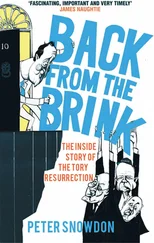Andrew Sorkin - Too Big to Fail - The Inside Story of How Wall Street and Washington Fought to Save the FinancialSystem--and Themselves
Здесь есть возможность читать онлайн «Andrew Sorkin - Too Big to Fail - The Inside Story of How Wall Street and Washington Fought to Save the FinancialSystem--and Themselves» весь текст электронной книги совершенно бесплатно (целиком полную версию без сокращений). В некоторых случаях можно слушать аудио, скачать через торрент в формате fb2 и присутствует краткое содержание. Жанр: Старинная литература, на английском языке. Описание произведения, (предисловие) а так же отзывы посетителей доступны на портале библиотеки ЛибКат.
- Название:Too Big to Fail: The Inside Story of How Wall Street and Washington Fought to Save the FinancialSystem--and Themselves
- Автор:
- Жанр:
- Год:неизвестен
- ISBN:нет данных
- Рейтинг книги:4 / 5. Голосов: 1
-
Избранное:Добавить в избранное
- Отзывы:
-
Ваша оценка:
- 80
- 1
- 2
- 3
- 4
- 5
Too Big to Fail: The Inside Story of How Wall Street and Washington Fought to Save the FinancialSystem--and Themselves: краткое содержание, описание и аннотация
Предлагаем к чтению аннотацию, описание, краткое содержание или предисловие (зависит от того, что написал сам автор книги «Too Big to Fail: The Inside Story of How Wall Street and Washington Fought to Save the FinancialSystem--and Themselves»). Если вы не нашли необходимую информацию о книге — напишите в комментариях, мы постараемся отыскать её.
Too Big to Fail: The Inside Story of How Wall Street and Washington Fought to Save the FinancialSystem--and Themselves — читать онлайн бесплатно полную книгу (весь текст) целиком
Ниже представлен текст книги, разбитый по страницам. Система сохранения места последней прочитанной страницы, позволяет с удобством читать онлайн бесплатно книгу «Too Big to Fail: The Inside Story of How Wall Street and Washington Fought to Save the FinancialSystem--and Themselves», без необходимости каждый раз заново искать на чём Вы остановились. Поставьте закладку, и сможете в любой момент перейти на страницу, на которой закончили чтение.
Интервал:
Закладка:
In order to pay back the government, AIG would have to sell off assets—and under the circumstances, that meant a fire sale. To AIG loyalists, the loan was proving to be less a bridge to solvency than a plank to an organized breakup.
“This is unbelievable,” Willumstad said, setting aside the document.
The board of AIG was prepared to meet soon for an emergency session. As Willumstad stood and reread the terms in a virtual state of shock, his assistant called out to say that Tim Geithner was on the phone. It was 4:40 p.m.
Willumstad followed Beattie and Cohen into his office and hit the speakerphone button.
“Can you hang on a minute?” Geithner said after greeting him. “Secretary Paulson is going to pick up.”
“Okay,” Willumstad said, adding, “I’ve got Dick Beattie and Rodgin Cohen sitting here with me.”
“So, you’ve seen the new agreement, right?” Geithner asked after Paulson joined in. “We want to know that you are going to accept the terms. We need an answer back from you soon, because trading is going to start in Asia.”
In the back of his own mind, Geithner had a nagging worry: Were the terms too harsh? But he was at least as concerned about potential blowback from the other direction—that Treasury would be criticized for giving AIG a sweetheart deal.
It was no coincidence, though, that the government’s terms had so much in common with what the private sector had been considering. For one thing, they had used many of the same advisers. And in the current political environment, there was safety in being able to say that AIG was only getting what the market had been willing—or almost willing—to offer.
“Obviously, we have a board meeting in fifteen minutes, and I’m prepared to present it there,” Willumstad said.
“Tim, it’s Dick,” Beattie said, jumping in. “I just want to be clear that you know that you shouldn’t assume just because you stepped in that the board will approve this. We’ve got a fiduciary duty to our shareholders, so it is going to be complicated.”
Beattie, playing hardball, had effectively implied a threat that AIG might be better off filing for Chapter 11 bankruptcy than taking the government’s deal.
Geithner didn’t flinch. “This is the only proposal you’re going to get,” he tersely replied, and then added, “There’s one other condition… .”
Paulson, interrupting, said, “The condition is that we’re going to replace you, Bob.”
Beattie and Cohen looked at Willumstad in embarrassed silence.
“O … kay,” Willumstad said. “If that’s what you want.”
“We’re going to bring in a new CEO,” Paulson said matter-of-factly. “He’ll be showing up tomorrow.”
Willumstad had had no illusions that a government rescue would mean anything other than his ouster, but he was stunned by the speed of events. The government had just made its offer moments ago—and it had already completed an executive search to find his successor?
“Should I still be here?” Willumstad asked, confused about how to proceed.
“Yeah, we would appreciate whatever cooperation and help you can offer,” Paulson replied.
“Is it okay if I ask who it is?”
“It’s Ed Liddy,” Paulson said.
For a moment, Willumstad wracked his memory. “Who the hell is Ed Liddy?” Beattie whispered, but Cohen only shrugged his shoulders.
“Ed just retired recently as the CEO of Allstate,” Paulson interjected, realizing they had no idea who he was.
After the call, Willumstad slumped in his chair, sighed, and then looked over at Beattie and laughed.
“Well, you’re wrong,” he said. “I won’t be working for the federal government after all.”

The directors of AIG were already gathered in the boardroom when Willumstad and the advisers made their entrance. Willumstad wasted no time on preliminaries.
“We are faced with two bad choices,” he began. “File for bankruptcy tomorrow morning, or take the Fed’s deal tonight.” He explained the terms of the deal and told them that Blackstone would come in with bankruptcy advisers to discuss the merits of that route.
And then he told them his personal news.
“I’m going to be replaced,” he said quietly. “Ed Liddy is going to take my place.”
“Ed Liddy?” asked Virginia Rometty.
“Yeah, he’s Allstate,” Willumstad explained.
“I’ve known him for fifteen years,” she said. A top executive with IBM, Rometty had once headed the sales group for the computer company’s division that catered to the insurance and financial industries. “I wouldn’t have thought Ed would have been the guy.”
“I know Ed Liddy!” James Orr chimed in. Orr had been chief executive of Unum, a Maine insurer that had fought off an effort by Allstate to grab market share from the company in the long-term disability category it dominated. “If we were looking for a CEO of this company, not only wouldn’t he have been on the short list, he wouldn’t have been on the long list!”
“Well, that’s one of the decisions you’ll have to digest,” Willumstad said calmly, and turned the meeting over to Cohen.
Martin Feldstein, an AIG director and former economic adviser to President Ronald Reagan, couldn’t believe that the government—a Republican administration—was going to be effectively buying a stake in a private business.
Rodgin Cohen, reminding the board that they had a fiduciary duty not only to shareholders but to bondholders as well, pressed for a bankruptcy.
“You should consider all these things,” Beattie said. “Just because it’s the Fed doesn’t mean you have to accept this. You should listen to all the options.”
Willumstad’s assistant slipped into the room and handed him a note: Hank Greenberg is on the phone . He rolled his eyes, leaned over to John Studzinski, and passed him an instruction: “Would you please call Hank Greenberg back?”

Studzinski crept out of the boardroom, aware of just how awkward this call was going to be for him to make. To help smooth the way, Studzinski enlisted Pete Peterson, Blackstone’s co-founder and a longtime friend of Greenberg, to join the call. At Greenberg’s suggestion, AIG had invested $1.35 billion in Blackstone when the firm was flagging in the aftermath of the 1998 Russian debt crisis.
While Studzinski waited on the line, Peterson dialed Greenberg’s office on Park Avenue.
“He can’t talk right now,” Greenberg’s assistant said. “He’s going on Charlie Rose to talk about AIG.”
“You’ve got to be kidding me,” Peterson said.
When Studzinski returned to the board meeting, he passed a note to Willumstad and relayed the news. For a moment, Willumstad smiled.
The board quickly returned to the grim subject at hand. Cohen, offering the pros and cons of the government’s deal, explained the argument for a Chapter 11 bankruptcy filing, saying that the company might do better in an orderly unwinding in court rather than accept the government’s take-it-or-leave-it offer.
Each of the various advisers offered their view. Studzinski said that a bankruptcy filing by a company as large and as complex as AIG would take many months to get under control and that the likelihood was that even more value would be eroded. “I just spent the last ten minutes giving you all the banking reasons to do this,” Studzinski summed up. “But there’s one more,” he said, looking around the room.
Читать дальшеИнтервал:
Закладка:
Похожие книги на «Too Big to Fail: The Inside Story of How Wall Street and Washington Fought to Save the FinancialSystem--and Themselves»
Представляем Вашему вниманию похожие книги на «Too Big to Fail: The Inside Story of How Wall Street and Washington Fought to Save the FinancialSystem--and Themselves» списком для выбора. Мы отобрали схожую по названию и смыслу литературу в надежде предоставить читателям больше вариантов отыскать новые, интересные, ещё непрочитанные произведения.
Обсуждение, отзывы о книге «Too Big to Fail: The Inside Story of How Wall Street and Washington Fought to Save the FinancialSystem--and Themselves» и просто собственные мнения читателей. Оставьте ваши комментарии, напишите, что Вы думаете о произведении, его смысле или главных героях. Укажите что конкретно понравилось, а что нет, и почему Вы так считаете.












